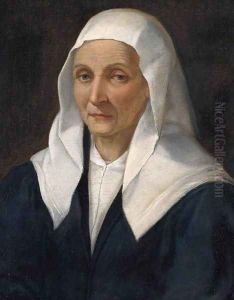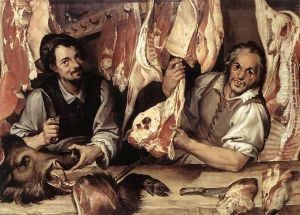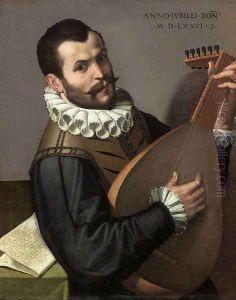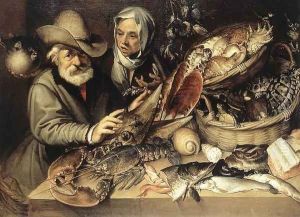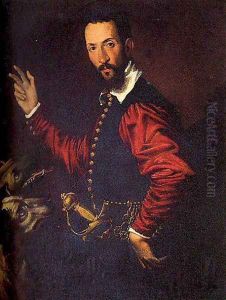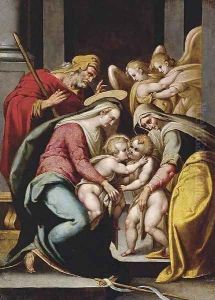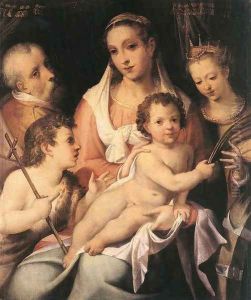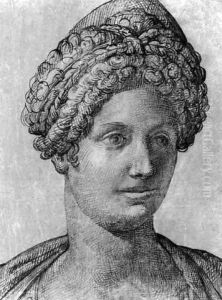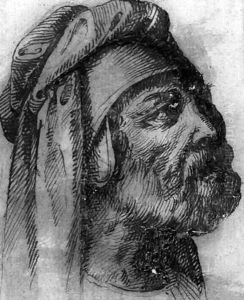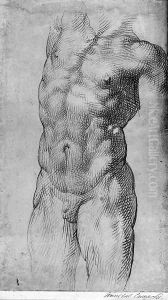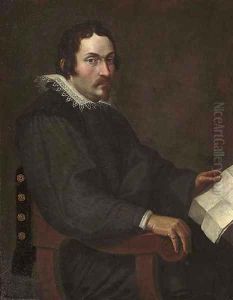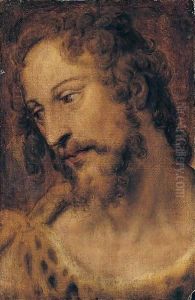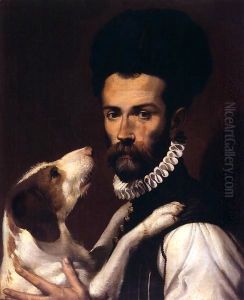Bartolomeo Passerotti Paintings
Bartolomeo Passerotti was an Italian painter who is known for his significant contribution to the Mannerist style of the late Renaissance period. Born in Bologna in 1529, Passerotti was part of the Bolognese School, a group of artists active in the city during the 16th century. His early training is not well documented, but he likely studied under local painters in Bologna before traveling to Rome, where he was exposed to the works of Raphael and Michelangelo, which influenced his artistic development.
In his early career, Passerotti worked mainly on religious commissions for churches in Bologna, creating altarpieces and frescoes that reflected the Mannerist penchant for artificiality, elegance, and complex compositions. His work is characterized by the use of vibrant colors, elongated figures, and a sophisticated handling of light and shade. One of his most notable religious works is the 'Guardian Angel with Saints' altarpiece in the church of Santa Maria dei Servi in Bologna.
However, Passerotti was also one of the first Italian artists to give importance to genre scenes, depicting everyday life with a touch of caricature and humor. His genre paintings often featured market scenes, vendors, and butchers—a reflection of the bustling urban life of Bologna. These works are considered his most innovative contributions to art, as they display a keen observation of daily life and a lively representation of his subjects. 'The Butcher's Shop,' one of his masterpieces, showcases his ability to blend genre painting with portraiture, as he included himself and his son in the composition.
Passerotti also ran a busy workshop, which became a training ground for future artists, and he was known to have a significant impact on the development of the Bolognese School. His influence can be seen in the works of his pupils, such as Agostino Carracci and Annibale Carracci, who would go on to play a pivotal role in the development of the Baroque style.
Bartolomeo Passerotti's work was well-regarded during his lifetime, and he was celebrated for his contributions to both religious and secular art. He continued to paint and teach until his death in Bologna in 1592. His legacy is preserved in the collections of major museums around the world, showcasing his role as a bridge between the Renaissance and Baroque periods.
